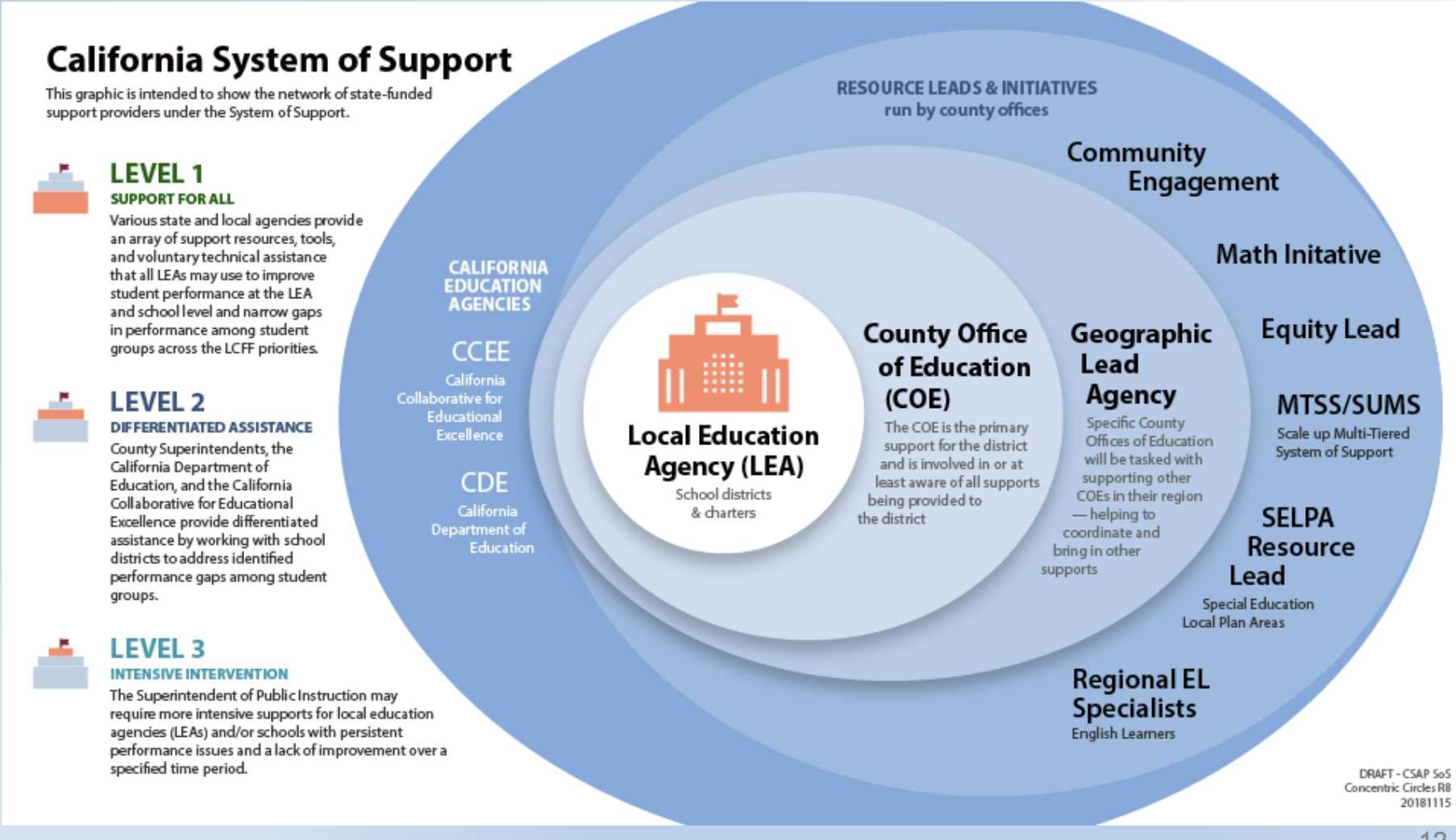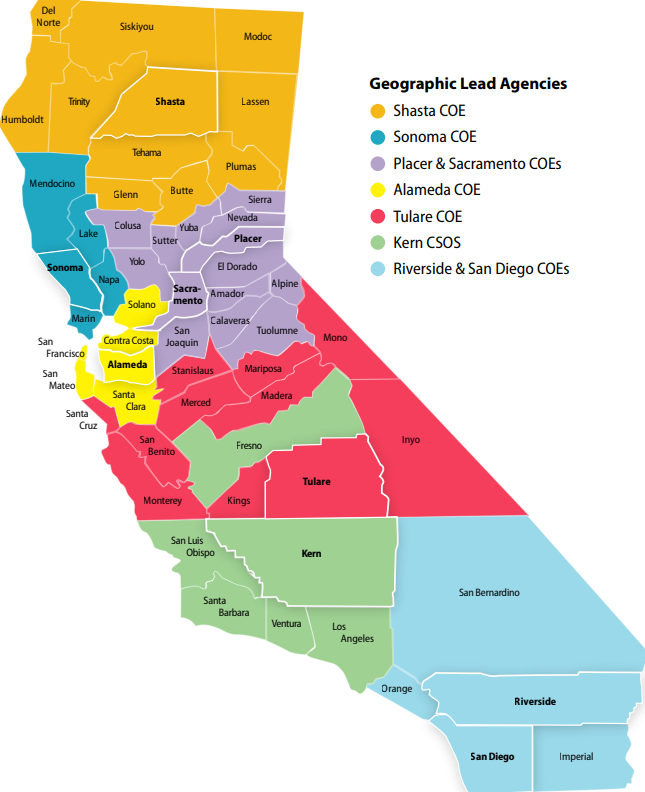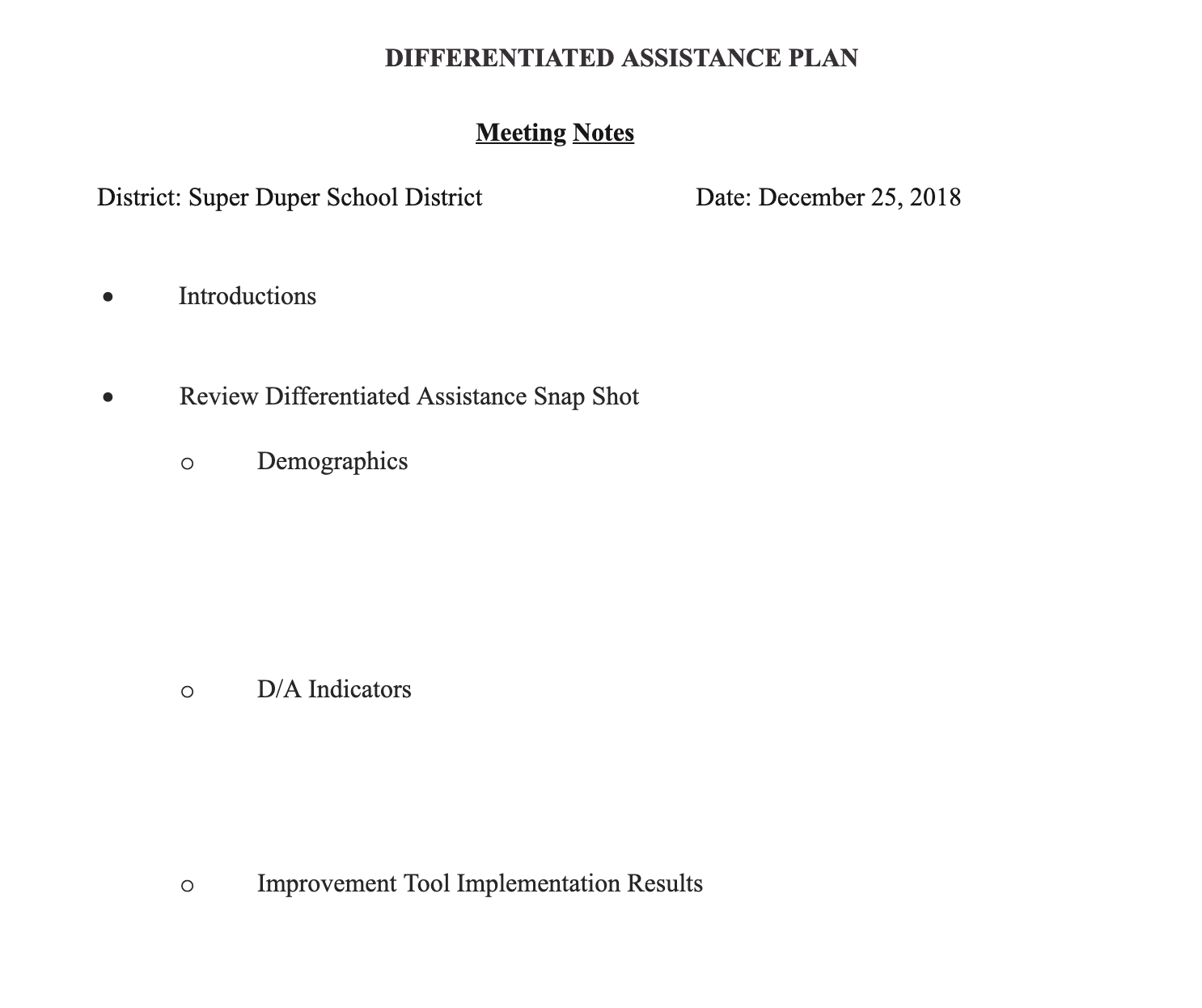Continuous Improvement
California’s System of Support
To help local educational agencies (LEAs) and their schools meet the needs of each student they serve, with a focus on building local capacity to sustain improvement and to effectively address disparities in opportunities and outcomes.
Differentiated Assistance
What does differentiated assistance mean?
California’s new accountability and continuous improvement system is based on a three-tiered framework, with the first tier made up of resources and assistance that is made available to all local educational agencies. Differentiated assistance is the second tier of assistance that one or more agency is required by statute to provide to local educational agencies or schools that meet certain eligibility criteria. The third tier is intensive intervention, which is generally required based on persistent performance issues over a specified period of time.
-Source: ACSA.org
How is eligibility for differentiated assistance determined?
-Source: ACSA.org
LEA Criteria for Differentiated Assistance 2022
| LCFF State Priority Areas 1–5 | LCFF State Priority Areas 6–10 |
|---|---|
|
Basic (Priority 1) Teacher Assignments, Access to Standards Based curriculum, appropriate facilities
|
School Climate (Priority 6)
|
|
Implementation of State Academic Standards (Priority 2)
|
Access to a Broad Course of Study (Priority 7) -Course Access
|
|
Parent Engagement (Priority 3)
|
Outcomes in a Broad Course of Study (Priority 8) – Student Outcomes
|
|
Pupil Achievement (Priority 4)
|
Coordination of Services for Expelled Pupils – COEs Only (Priority 9)
|
|
Pupil Engagement (Priority 5)
|
Coordination of Services for Foster Youth – COEs Only (Priority 10)
|
-Source: CDE.ca.gov
How does an LEA get out of Differentiated Assistance?
Phase 1: Understand
A. DA Induction – Introduce districts either individually or collectively to the DA process.
B. Develop District DA Team – HCOE DA Lead works with district leader(s) to identify local DA team. The team examines strengths and weaknesses including assumptions and bias.
C. Dashboard Analysis – DA Lead facilitates a deep dive into the California Dashboard supported by HCOE data support personnel.
D. Local Measures Analysis – Team Identifies additional data useful for examining the challenge in question. HCOE’s data analyst develops custom reports and dashboards to support DA team.
E. Systems Analysis (E.G. FIA) – DA Lead and Team conducts a systems analysis or leverages existing tools deployed (e.g. FIA)
F. Root Cause Analysis – DA Lead conducts a root cause analysis. Typical Improvement Science tools used during the RCA include the fishbone, five-whys protocol, driver diagram, empathy interviews, student surveys, etc…
Phase 2: Plan
B. HCOE Differentiated Assistance Team meets monthly or on an as-needed basis to share district interactions, DA updates, and needs.
C. Additional supports are identified during this phase which includes members of the HCOE DA Team, HCOE employees or third-party resources.
Phase 3: Act
A. Develop Differentiated Assistance Plan (DAP) – Upon completion of the synthesis of findings (Snapshot). District leaders meet with the County Superintendent, Assistant Superintendent, Director of Learning Support Services and HCOE DA Lead to develop the DAP. The purpose of the DAP is to develop a plan of action, formalize resource requests (e.g. instructional coaching, alternatives to suspension, etc.). LEAs use PDSA (Plan Do Study Act) cycles to implement, test and measure change.
B. Progress Monitoring – Once DAP is in place, the process transitions to progress monitoring to assess impact, identify additional resources, and evaluate the effectiveness of treatment.
C. Districts will also be invited to participate in a county-wide Network Improvement Community (NIC) focusing on Continuous Improvement, Improvement Science and LCFF Priorities.



